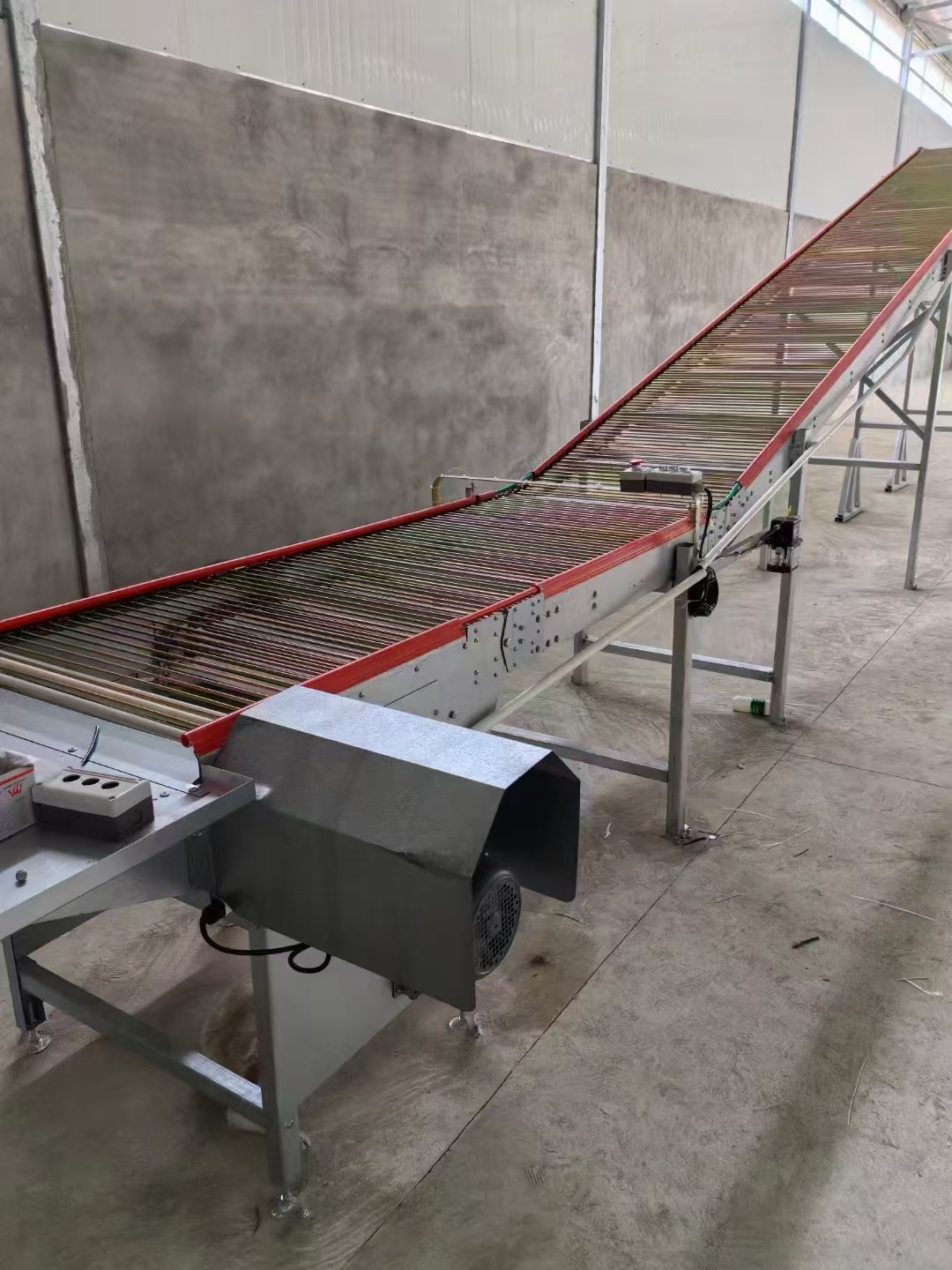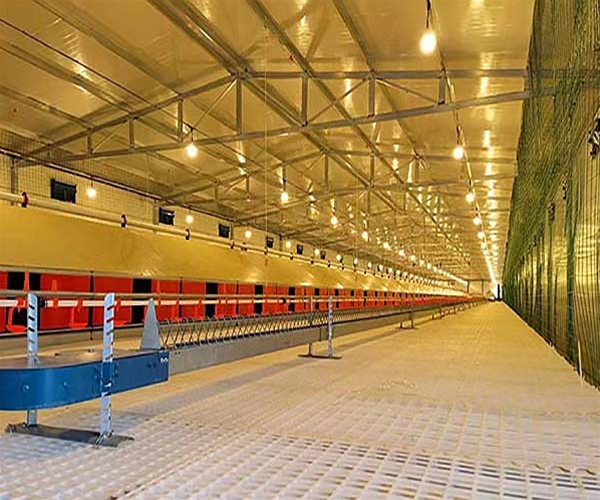As agricultural technology advances, automation devices play a key role in modern poultry farming. Egg collecting machines and central egg collectors are essential tools for improving egg collection efficiency, reducing labor costs, and ensuring egg hygiene. This article explores how these devices work, their benefits, and how they enhance poultry farm management.
How Egg Collecting Machines Work and Their Benefits
An egg collecting machine is an automated device that farms use to collect eggs from chicken cages.When hens lay eggs in the nesting cages, the eggs naturally roll down to the egg collection belt at the bottom of the cage. The egg collection belt is a well-designed device, typically made of durable mesh material, which efficiently receives the eggs and allows them to roll smoothly.
As the belt moves, the eggs are gradually transported to the soft egg sorter. The soft egg sorter filters out broken or deformed eggs, ensuring that these non-standard eggs do not enter the subsequent processing stages. Meanwhile, healthy and intact eggs pass through the sorter and are concentrated in a designated collection area. This automated process not only improves the efficiency of egg collection but also effectively reduces human error, ensuring that each egg maintains high quality and hygiene. As a result, it enhances production efficiency and the market competitiveness of the eggs.
Benefits of egg collecting machines include:
- Reducing labor costs: The machine handles egg collection, eliminating the need for workers to manually gather eggs.
- Increasing efficiency: The machine quickly collects eggs, boosting overall efficiency, especially in large-scale operations.
- Improving hygiene: The machine minimizes human contact with eggs, lowering the risk of contamination and ensuring better hygiene.
How Central Egg Collectors Work and Their Benefits
The central egg collection system connects the egg collecting machines of multiple chicken coops, enabling centralized egg collection. Each egg collecting machine automatically gathers eggs from the respective coop and transports them via a conveyor system to the central egg collection line. In this process, eggs from different coops are gathered at a central location, eliminating the need for manual handling and the hassle of separate storage.
This automated system not only improves the efficiency of egg flow but also reduces the need for manual labor, saving significant time and effort. At the same time, the central collection system helps prevent egg damage or confusion, ensuring the integrity and hygiene of the eggs. Through this centralized management approach, the farm’s egg collection process becomes more efficient and standardized, ultimately enhancing overall productivity and reducing operational costs.
Benefits of central egg collectors include:
- Centralizing management: The system collects all eggs in one area, making storage and management more efficient.
- Reducing egg loss: The machine minimizes egg breakage, preventing eggs from becoming damaged and ensuring they stay intact.
- Streamlining operations: By integrating with the egg collecting machine, the central collector creates a fully automated process, reducing the need for manual labor and increasing overall productivity.
The Synergy Between Egg Collecting Machines and Central Egg Collectors
In modern poultry farms, egg collecting machines and central egg collectors work together seamlessly. The egg collecting machine retrieves eggs from the coops, while the central egg collector consolidates them in a single location. By automating this entire process, farms can streamline their operations and reduce human error. This combination helps improve overall productivity and minimize contamination risks.
Conclusion
Egg collecting machines and central egg collectors are indispensable tools for modern poultry farming. These devices improve egg collection efficiency, reduce labor costs, and maintain egg hygiene. As automation continues to evolve, these devices will become even more essential for the poultry industry. Therefore, investing in them is a smart decision for any farm looking to boost its efficiency and improve its operations.
FAQ
1. What is the cost-effectiveness of an automated egg collection system?
Although the initial investment is high, an automated egg collection system significantly reduces labor costs and, by decreasing egg damage and increasing collection efficiency, provides a considerable return on investment in the long term. The system also minimizes human errors during the collection process, improving egg quality and reducing losses.
2. How to handle a malfunction if the egg collection system encounters an issue?
The egg collecting machines and central egg collectors are designed to minimize the risk of failure. If issues arise, the system is typically equipped with fault alarms to help identify and resolve problems promptly. Most suppliers offer after-sales support, including regular maintenance and emergency repair services. It is important to choose a supplier with reliable after-sales support when purchasing the equipment.
3. Does the automated egg collection system require frequent maintenance?
Automated egg collection systems generally require regular maintenance to ensure their continued stable operation. The maintenance frequency typically depends on the system’s usage and scale. It is recommended to perform at least one comprehensive inspection and maintenance annually to ensure the system is functioning properly and at optimal performance. Regular cleaning and checks can also extend the lifespan of the equipment.
4. Is it complex to install an automated egg collection system?
Installation of an automated egg collection system is usually carried out by a professional team. The installation process is typically smooth, especially when working with a professional supplier. During installation, the supplier provides full technical support and training to help ensure a seamless system deployment and calibration. For customized systems, installation may take longer, but the professional team ensures the system operates smoothly.
5. How does the system ensure the hygiene and safety of the eggs?
The automated egg collection system is designed with hygiene and safety in mind. The system reduces egg contact with humans, significantly lowering the risk of contamination. Additionally, the materials used in the system are typically easy to clean and disinfect, ensuring the eggs remain hygienic and safe throughout the collection process. All systems also meet food safety standards, ensuring the eggs delivered are of high quality.
6. What functions can be upgraded in an automated egg collection system?
Many modern automated egg collection systems come with upgradeable features. Common upgrades include increased collection speed, intelligent management, data monitoring, real-time fault alerts, and automated adjustments. As technology advances, some systems may also support more efficient energy management or integration with other agricultural management systems.


